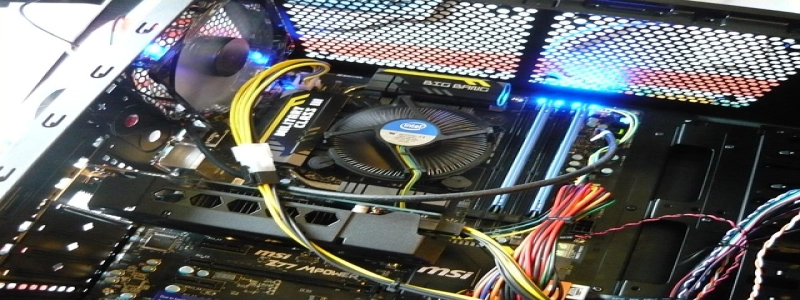KVM Ethernet
1. Overview
1.1 Introduction to KVM
1.2 Importance of Ethernet in KVM
2. What is KVM Ethernet?
2.1 Definition of KVM Ethernet
2.2 Usage of KVM Ethernet
2.3 Benefits of KVM Ethernet
3. How does KVM Ethernet work?
3.1 Virtualization in KVM
3.2 Integration of Ethernet in KVM
3.3 Communication between KVM hosts and guests
4. Setting up KVM Ethernet
4.1 Hardware requirements
4.2 Software requirements
4.3 Configuration steps
5. Troubleshooting common issues with KVM Ethernet
5.1 Network connectivity problems
5.2 Performance issues
5.3 Security concerns
6. Best practices for using KVM Ethernet
6.1 Proper network segmentation
6.2 VLAN tagging
6.3 Monitoring and managing network traffic
7. Závěr
7.1 Recap of the importance of KVM Ethernet
7.2 Future developments in KVM Ethernet technology
1. Overview
1.1 Introduction to KVM
KVM, which stands for Kernel-based Virtual Machine, is an open-source virtualization technology that allows running multiple virtual machines (VMs) on a single physical host. It provides a high level of flexibility, scalability, and security for hosting virtualized environments.
1.2 Importance of Ethernet in KVM
Ethernet plays a critical role in connecting and communicating between the different components of a KVM environment. It provides the network connectivity required for seamless communication between the KVM hosts and the virtual machines running on them. This allows for data transfer, resource sharing, and enables the functioning of various services within the virtualized environment.
2. What is KVM Ethernet?
2.1 Definition of KVM Ethernet
KVM Ethernet refers to the integration of Ethernet functionality within the KVM virtualization technology. It enables the establishment of virtual networks, connecting the virtual machines to the physical network infrastructure, and facilitating network communication between them.
2.2 Usage of KVM Ethernet
KVM Ethernet is used to establish the network connectivity required for VMs running on KVM hosts. It allows for the configuration of virtual network interfaces, attaching them to specific virtual machines, and connecting them to the outside network. This enables the virtual machines to access the internet, communicate with other VMs, and interact with other network-enabled devices.
2.3 Benefits of KVM Ethernet
– Simplified network management: KVM Ethernet provides a centralized approach to network configuration and management within the KVM environment. It allows administrators to set up and manage virtual networks without the need for physical network devices.
– Improved flexibility: KVM Ethernet enables the creation of virtual networks that can be customized to fit the specific needs of the virtualized environment. It offers the flexibility to configure network topologies, IP addressing, and network security settings.
– Enhanced security: KVM Ethernet allows for the isolation of virtual networks, ensuring that each VM operates in its secure network environment. This enhances the overall security posture of the virtualized infrastructure.
3. How does KVM Ethernet work?
3.1 Virtualization in KVM
KVM utilizes full virtualization, where the KVM hypervisor presents a complete set of virtual hardware to each VM. This includes virtual network interfaces that are connected to the KVM Ethernet backend.
3.2 Integration of Ethernet in KVM
KVM uses bridge networking to integrate Ethernet functionality within the virtualized environment. A bridge is created within the host operating system, connecting the physical network interface with the virtual network interfaces associated with the virtual machines.
3.3 Communication between KVM hosts and guests
KVM hosts and virtual machines communicate using virtual network interfaces and the bridge network. The bridge acts as a gateway, allowing traffic to flow between the physical network and the virtual machines. Virtual machines can communicate with each other through the bridge, and with external networks through the host’s physical network interface.
4. Setting up KVM Ethernet
4.1 Hardware requirements
To set up KVM Ethernet, you need a physical server capable of running KVM and a network interface card (NIC) that supports Ethernet connectivity. Additionally, you may require additional hardware such as switches or routers for network connectivity.
4.2 Software requirements
The software requirements include a Linux distribution with KVM support, such as Red Hat Enterprise Linux or Ubuntu Server. You will also need to install the necessary KVM packages and utilities.
4.3 Configuration steps
The configuration steps for setting up KVM Ethernet involve:
– Installing the KVM hypervisor and necessary packages
– Creating virtual networks and bridges
– Configuring virtual network interfaces for the virtual machines
– Connecting the virtual network interfaces to the appropriate virtual networks and bridges
– Verifying network connectivity
5. Troubleshooting common issues with KVM Ethernet
5.1 Network connectivity problems
If there are network connectivity issues, check the network configurations, firewall settings, and ensure that the bridge and virtual network interfaces are configured correctly.
5.2 Performance issues
Performance issues can arise due to incorrect network settings, hardware limitations, or network congestion. To address these issues, verify the network configurations, ensure sufficient resources are allocated to the virtual machines, and optimize network traffic management.
5.3 Security concerns
To address security concerns, always apply proper network segmentation, implement VLAN tagging where necessary, and regularly update and patch the virtual machines and the KVM host system.
6. Best practices for using KVM Ethernet
6.1 Proper network segmentation
Segment the virtual network infrastructure to isolate different types of traffic, such as management, production, and guest traffic. This enhances network security and prevents unauthorized access.
6.2 VLAN tagging
Implement VLAN tagging to separate traffic within the virtual networks and enhance network performance and management. This allows for logical network separation and reduces the need for physical network devices.
6.3 Monitoring and managing network traffic
Regularly monitor network traffic within the KVM environment to identify any anomalies or performance issues. Utilize network management tools to measure bandwidth usage, detect bottlenecks, and optimize network traffic for efficient operation.
7. Závěr
7.1 Recap of the importance of KVM Ethernet
KVM Ethernet is an essential component of the KVM virtualization technology, providing the network connectivity required for seamless communication between virtual machines and the outside network.
7.2 Future developments in KVM Ethernet technology
Future developments in KVM Ethernet technology may include improved network performance optimizations, enhanced security features, and increased integration with emerging network protocols and standards. As virtualization continues to evolve, KVM Ethernet will play a crucial role in facilitating network communication within virtualized environments.








